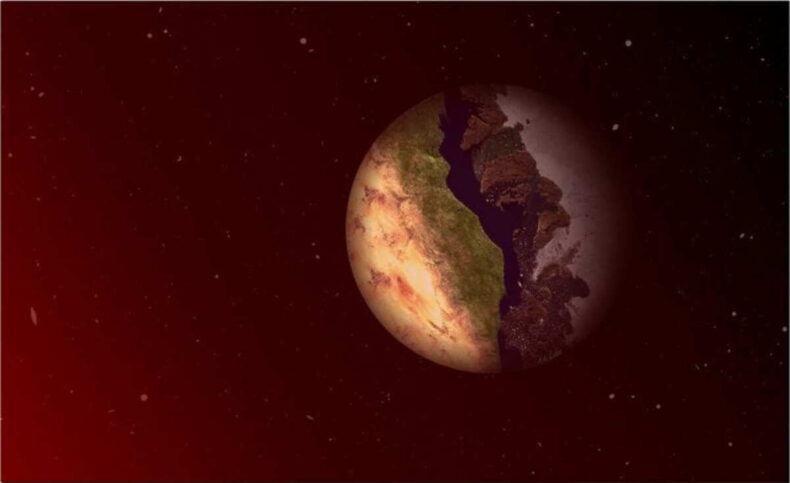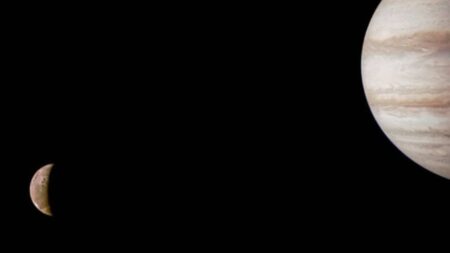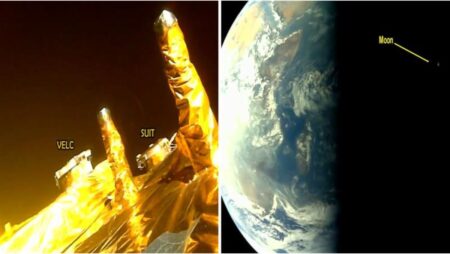A region on distant exoplanets known as the “terminator zone” is a ring on planets that constantly have one side facing its star and one side that is always dark. According to a recent study, astronomers from the University of California, Irvine explain how the possibility of extraterrestrial life exists on distant exoplanets within this region.

The line separating the day and night sides of a planet is known as the terminator. Terminator zones may exist in the right temperature range between too hot and too cold. The constant darkness of terminator planets would result in freezing temperatures that could turn any water into ice. It may be too hot for water to last in the open for very long on the side of the planet that is always facing its star. These planets are fairly frequent since they orbit so-called M-dwarf stars, which are comparatively fainter than our sun and account for around 70% of the stars visible in the night sky.
This is thought to be the first instance in which astronomers have demonstrated that such planets can support habitable climates that are restricted to the terminator zone. Exoplanets with seas have typically drawn the interest of scholars looking for possible places to settle in the past. But now Ana Lobo, a postdoctoral researcher in the UCI Department of Physics & Astronomy, and her team have demonstrated that terminator planets can also serve as potential hideouts for life. There are more possibilities open to scientists searching for life on terminator planets.
Astronomers will need to change the way they investigate the climates of exoplanets for evidence of life now that terminator zones have been identified as viable habitats for life since only some parts of the planet’s atmosphere may contain the microbial life that produces life. According to experts, liquid water is a requirement for life, so you want a planet that is in the ideal range of temperatures for having liquid water, said Lobo.
The report claims that Lobo and Aomawa Shields, a UCI associate professor of physics and astronomy, employed software generally used to analyze the temperature of our planet, with a few modifications, such as decreasing the planetary rotation, to model the climate of terminator planets.
The discovery, according to Lobo on Terminator
Depended in part on determining which types of terminator zone planets may store liquid water. The study discovered that the water facing the star would probably evaporate and cover the entire planet in a thick layer of vapor if the earth is primarily covered in water. Despite not having vast oceans, some water-limited planets may still contain lakes or other smaller bodies of liquid water, and these conditions may be quite promising, according to Lobo. But, if there is land, this influence shouldn’t occur.
In the future, groups looking for planets that could support extraterrestrial life will be able to use telescopes like the James Webb Space Telescope or the Large Ultraviolet Optical Infrared Surveyor telescope that NASA is currently developing.
Yet, this discovery might expand the range of alternatives available to astronomers looking for life. We are attempting to raise attention to other planets with restricted water resources, which could yet contain lakes or other smaller pools of liquid water while not having vast oceans, and these conditions could actually be extremely promising, continued Lobo.
The likelihood that we will discover and correctly identify a habitable planet in the near future is increased, as per Lobo, by investigating these unusual climate states.
Read more on: https://news.uci.edu/2023/03/16/terminator-zones-on-distant-planets-could-harbor-life-uc-irvine-astronomers-say/













